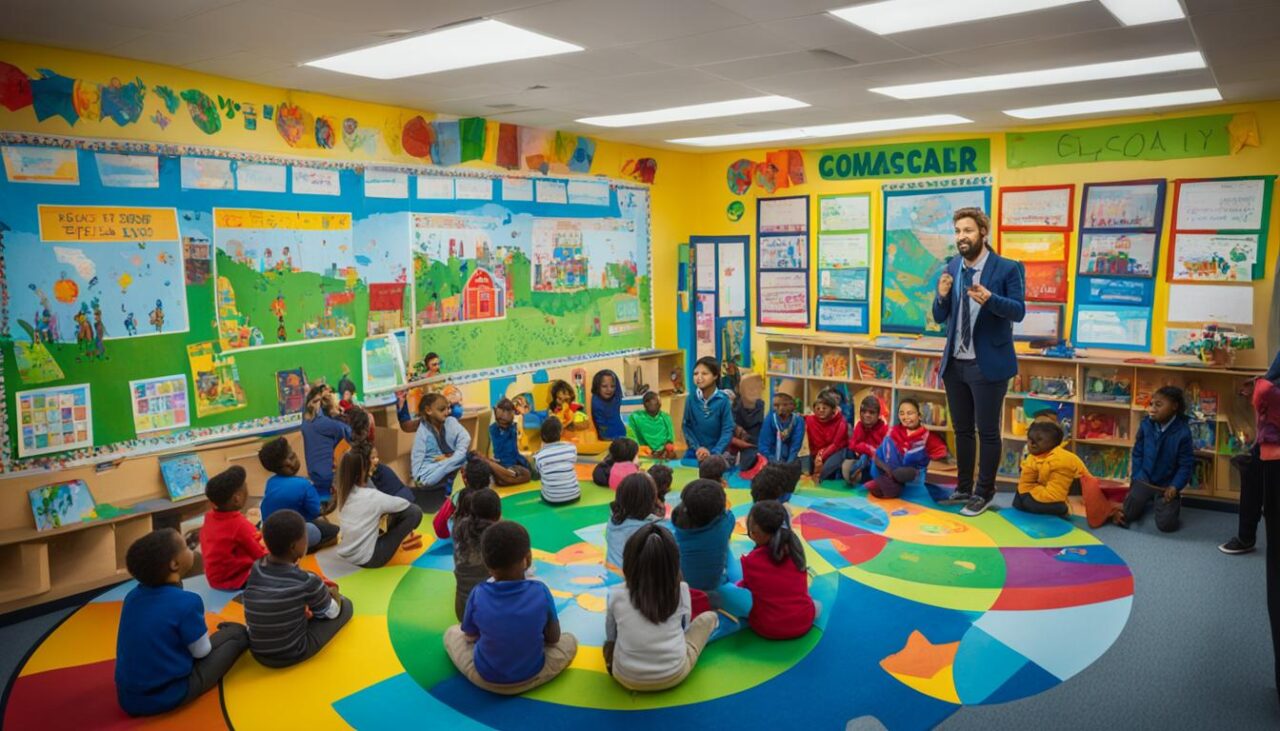The Australian education system offers a world-class education to students from around the globe. The system is renowned for its high standards, innovative approaches to learning, and its emphasis on practical skills development. From primary and secondary schooling to higher education and vocational training, the Australian education system has something to offer for everyone.
With its diverse range of providers, including schools, universities, and vocational training institutions, the Australian education system is well-equipped to provide students with the skills and knowledge they need to achieve their career aspirations.
Key Takeaways
- The Australian education system provides a wide variety of learning options for students.
- The system's focus on practical skills development makes it a popular choice for students seeking to enter the workforce.
- Australian universities are renowned for their high quality of education and research opportunities.
- There are many scholarship opportunities available for international students who wish to study in Australia.
- The vocational education and training sector in Australia is one of the most highly regarded in the world.
Primary and Secondary Schooling in Australia
Primary and secondary schooling in Australia follows the K-12 education system, which includes 13 years of schooling beginning with Kindergarten (Year 0) and ending with Year 12. Australian schools offer a curriculum that focuses on academic and practical skills to help students succeed in their chosen field.
The Australian curriculum covers a wide range of subjects, including English, Mathematics, Science, Humanities and Social Sciences, Health and Physical Education, The Arts, and Technologies. Schools can choose to specialize in certain areas, such as music, performing arts, or sports.
A key feature that distinguishes the Australian education system from others around the world is its emphasis on a holistic education that includes a focus on values, such as respect, tolerance, and empathy.

“Australian schools provide a high-quality education that prepares students for their future careers by developing their critical thinking and problem-solving ability.”
Types of Schools
There are three types of schools in Australia: government schools, Catholic schools, and independent schools. Government schools are tuition-free and open to all students, while Catholic and independent schools charge fees.
Government schools are run by state and territory governments, while Catholic schools are run by the Catholic Church. Independent schools are not operated by the government or religious bodies and are funded through fees, donations, and government grants.
The Australian Curriculum
The Australian Curriculum sets out the learning goals and standards for all students in primary and secondary school. It provides a consistent framework for teaching and learning across Australia, ensuring that students receive a high-quality education regardless of where they live.
The curriculum is designed to develop students' knowledge, understanding, and skills in English, Mathematics, Science, and a range of other subject areas. It also includes a focus on developing critical and creative thinking, problem-solving, and communication skills.
Higher Education Opportunities in Australia
Australia is a top destination for higher education, attracting both domestic and international students. Some of the renowned universities in the country include the University of Melbourne, the Australian National University, and the University of Sydney. These universities offer a wide range of courses and programs that cater to various academic interests and career aspirations. Students can choose from undergraduate degrees, postgraduate degrees, and research programs.
In addition, universities in Australia have a strong focus on research, offering numerous opportunities for students to engage in cutting-edge research projects and contribute to academic advancements. International students are eligible for various scholarships and grants that cover tuition fees and living expenses. These scholarships provide a means of expanding student's horizons and diversifying the campus experience in Australia.
“I have been able to engage in innovative research projects at the University of Melbourne, which has exposed me to a diverse range of perspectives and ideas. The scholarship I received has been instrumental in funding my education and allowing me to focus on my academic pursuits”
-Emma White, Recipient of a Scholarship at the University of Melbourne
Overall, Australia's higher education system offers diverse opportunities for academic and personal growth for both domestic and international students. These universities provide a stimulating environment for learning and research, making Australia an ideal destination for higher education for students around the world.
Vocational Training in Australia
Vocational training plays an integral role in the Australian education system. It provides students with practical skills and knowledge to excel in their chosen careers. The vocational education and training (VET) courses are designed to meet the industry's needs and provide the students with the necessary skills to succeed in the workforce.
Australia's VET system has a wide range of vocational courses available. Among the popular vocational courses are Certificate II, III, and IV, Diploma, and Advanced Diploma. Students can choose from a variety of fields, including business, health care, hospitality, construction, IT, and more.
The vocational courses have a strong emphasis on Science, Technology, Engineering, and Mathematics (STEM) subjects. This ensures that students have a strong foundation in essential disciplines, making them well-rounded professionals in their chosen field.
The VET system in Australia is designed to provide students with flexible learning opportunities. Students can undertake training through apprenticeships, traineeships, or other forms of vocational training. This provides students with the flexibility to tailor their training to meet their individual needs and circumstances.
Upon completion of vocational courses, students can obtain vocational training pathways and certifications leading to various skilled professions. The courses provide the students with the necessary skills and knowledge to pursue a range of job opportunities.

“Vocational training is an essential component of the Australian education system, providing students with practical skills and knowledge for employment.”
Conclusion
The Australian Education System offers a comprehensive range of options for students of all levels. Whether you're interested in pursuing academic excellence at a prestigious university or seeking hands-on learning experiences through vocational training, the Australian education system caters to diverse educational aspirations.
From primary and secondary schooling to higher education and vocational training, the system is designed to provide opportunities for academic and practical learning. Australian universities are renowned for their high standards of education, extensive research, and scholarship options, attracting students from around the world.
The country's primary and secondary schooling system is structured around the K-12 curriculum, which emphasizes practical learning and critical thinking. Vocational training is also an essential component of the Australian education system, with an emphasis on STEM subjects and certifications that lead to skilled professions.
In summary, the Australian education system is a world-class offering, structured to provide students with a well-rounded and practical education. Whether you're a domestic or international student seeking high-quality education, the Australian Education System can help you achieve your academic and career goals.

